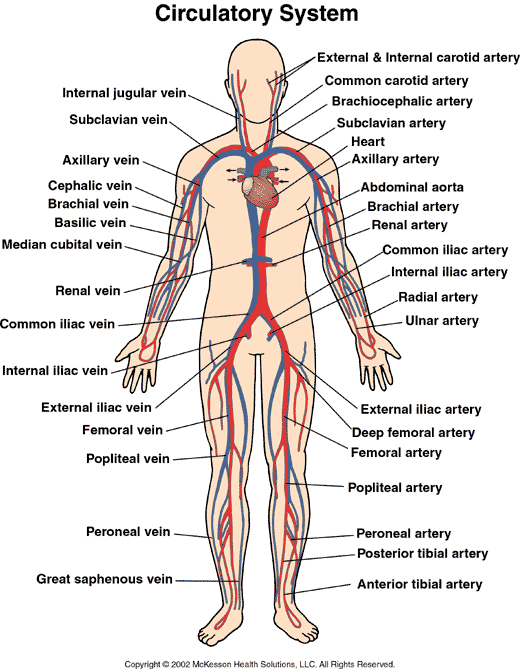The Circulatory System
The Body's Blood Provider
The circulatory system, also known as the cardiovascular system, helps maintain homeostasis by performing many functions. This system helps maintain your body by carrying nutrients to your cells and by removing wastes from them. It carries needed substances to cells and waste products away from cells.
Arteries are vessels that carry blood away from the heart. Each heartbeat pumps blood into your arteries at high pressure. Artery walls stretch and are usually strong enough to stand the pressure.
Veins are blood vessels that carry blood back to the heart. As blood travels through veins, valves in the veins keep the blood from flowing backward. When skeletal muscles contract, they squeeze nearby veins and help push blood toward the heart.
There are 4 chambers in the heart. Each side of the heart has an upper and lower chamber. The upper chambers are called atrium and the lower chambers are called ventricle.
The major organ of the circulatory system is the heart. With each heartbeat, the heart sends life-giving blood throughout the almost 50,000 miles of blood vessels and capillaries in the body. Blood carries oxygen and food to all the body cells.

No comments:
Post a Comment